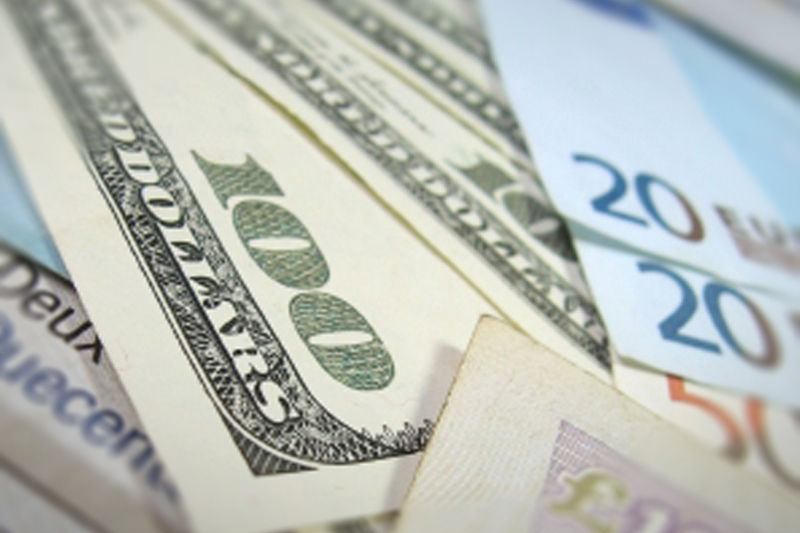Investing.com -- EUR/USD inched up on Friday posting its fifth consecutive winning session, as currency traders mostly shrugged off a positive U.S. jobs report days after Federal Reserve chair Janet Yellen said the U.S. central bank would take a cautious approach to the timing of its next interest rate hike.
The currency pair traded in a broad range between 1.1338 and 1.1437, before settling at 1.1389, up 0.008 or 0.07% on the session. The euro hit fresh 5-month highs on Friday morning, before the dollar trimmed losses after the release of the mostly upbeat data. In the last month alone, the euro has surged nearly 5% against its American counterpart, as longstanding concerns related to a sharp divergence in monetary policies has faded.
EUR/USD likely gained support at 1.0538, the low from December 3 and was met with resistance at 1.1496, the high from Oct. 15.
On Friday morning, the U.S. Department of Labor's Bureau of Labor Statistics (BLS) said nonfarm payrolls rose by 215,000 in March, slightly above consensus estimates of 210,000 and extending encouraging gains from February when the labor market added an upwardly revised 245,000 nonfarm positions. The gains were concentrated in Retail Trade, Construction and Health Care, which all exhibited considerable increases over the month. After adding 48,000 jobs in March, the Retail Trade sector has grown by more than 375,000 during the last year.
"The remarkable U.S. recovery continues, as total nonfarm employment increased by 215,000 in March. Beginning just a year after President Obama inherited the worst economic crisis in generations, businesses have been adding jobs at an extended, record-setting clip: a total of 14.4 million jobs over the last 73 consecutive months of private-sector job growth," U.S. labor secretary Thomas Perez said in a statement.
"There are so many reasons to be bullish about our economic future, but we can’t become complacent about the challenges that remain. Continued weakness in manufacturing, for example, is a reminder that we must keep working to restore balance to the economy, to ensure that the recovery benefits people in all communities, up and down the income spectrum."
Although the unemployment rate inched up by 0.1 to 5.0%, it still remains near eight-year lows from the previous two months. The U-6 unemployment rate, which factors in workers marginally attached to the labor force, as well as part-time workers, rose slightly to 9.8%. By comparison, the U-6 rate stood at 10.9% last March and reached as high as 18.0% at the height of the Great Recession. The reading is the Fed's preferred gauge for unemployment, as it judges the strength of the labor market.
Notably, average hourly earnings jumped by 0.3% one month after slumping by 0.1% in February. The labor force participation rate also increased by 0.1 to 63%, while the average work week held steady at 34.4 hours.
The CME Group's (NASDAQ:CME) Fed Watch tool increased the probability of a June interest rate hike to 25.0% on Friday from 19.0% on the previous day. Last month, there was a 77% chance the Fed would raise short-term rates at least once before July, according to the CME Group. Earlier this week, Yellen said the Federal Open Market Committee (FOMC) will likely raise rates gradually in light of heightened global economic and financial risks. The FOMC has left its benchmark Federal Funds Rate at a targeted range between 0.25 and 0.50% in each of its first two meetings this year.
The U.S. Dollar Index, which measures the strength of the greenback versus a basket of six other major currencies, gained more than 0.10% to an intraday high of 95.10, before falling back to 94.59 in U.S. afternoon trading. The index remains near five-month lows.
One day after falling to five-week lows, yields on the U.S. 10-Year were flat at 1.77%.
